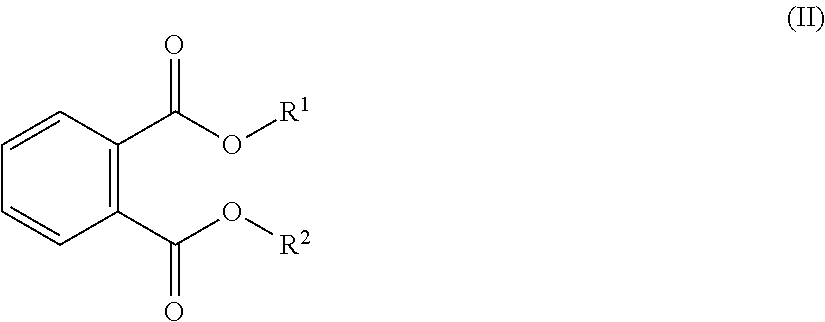Tough composition for food applications
a polypropylene and composition technology, applied in the field of new heterophasic polypropylene composition, can solve the problems of difficult material acquisition, intrinsically very brittle material, and polypropylenes with rather high melt flow rate (mfr), and achieve the effects of improving the processability of impact material, low brittle/ductile transition temperature, and fast material throughpu
- Summary
- Abstract
- Description
- Claims
- Application Information
AI Technical Summary
Benefits of technology
Problems solved by technology
Method used
Image
Examples
examples
A. Measuring Methods
[0171]The following definitions of terms and determination methods apply for the above general description of the invention as well as to the below examples unless otherwise defined.
1. NMR-spectroscopy Measurements:
[0172]The 13C-NMR spectra of polypropylenes were recorded on Bruker 400 MHz spectrometer at 130° C. from samples dissolved in 1,2,4-trichlorobenzene / benzene-d6 (90 / 10 w / w). For the pentad analysis the assignment is done according to the methods described in literature: (T. Hayashi, Y. Inoue, R. Chüjö, and T. Asakura, Polymer 29 138-43 (1988). and Chujo R, et al, Polymer 35 339 (1994).
[0173]The NMR-measurement was used for determining the mmmm pentad concentration in a manner well known in the art.
2. Mw, Mn, Mz, MWD
[0174]Mw / Mn / Mz / MWD are measured by Gel Permeation Chromatography (GPC) according to the following method:
[0175]The weight average molecular weight (Mw), the number average molecular weight (Mn), z-average molecular weight (Mz), and the molecu...
PUM
| Property | Measurement | Unit |
|---|---|---|
| temperature | aaaaa | aaaaa |
| melt flow rate | aaaaa | aaaaa |
| melt flow rate | aaaaa | aaaaa |
Abstract
Description
Claims
Application Information
 Login to View More
Login to View More - R&D
- Intellectual Property
- Life Sciences
- Materials
- Tech Scout
- Unparalleled Data Quality
- Higher Quality Content
- 60% Fewer Hallucinations
Browse by: Latest US Patents, China's latest patents, Technical Efficacy Thesaurus, Application Domain, Technology Topic, Popular Technical Reports.
© 2025 PatSnap. All rights reserved.Legal|Privacy policy|Modern Slavery Act Transparency Statement|Sitemap|About US| Contact US: help@patsnap.com


